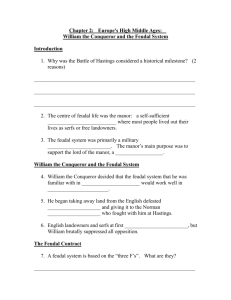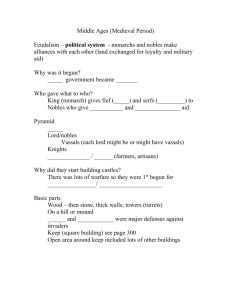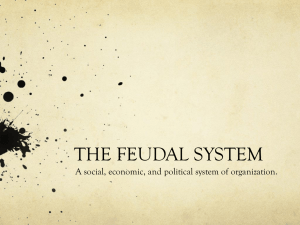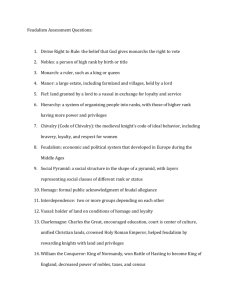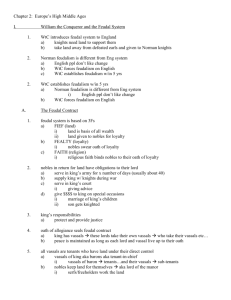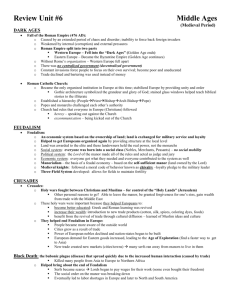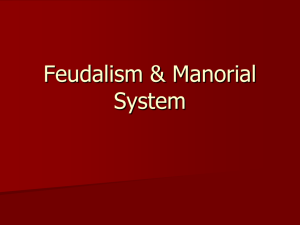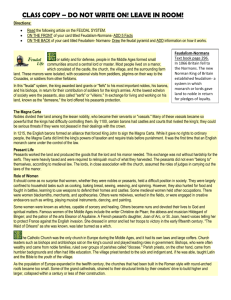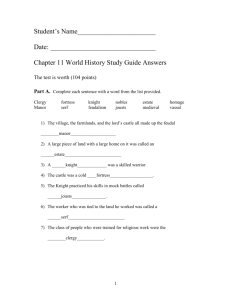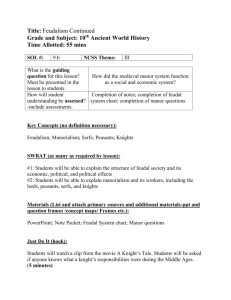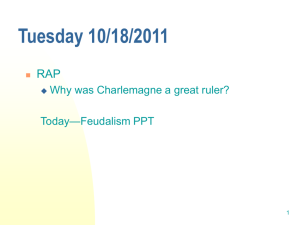Feudalism Western Rome II
advertisement
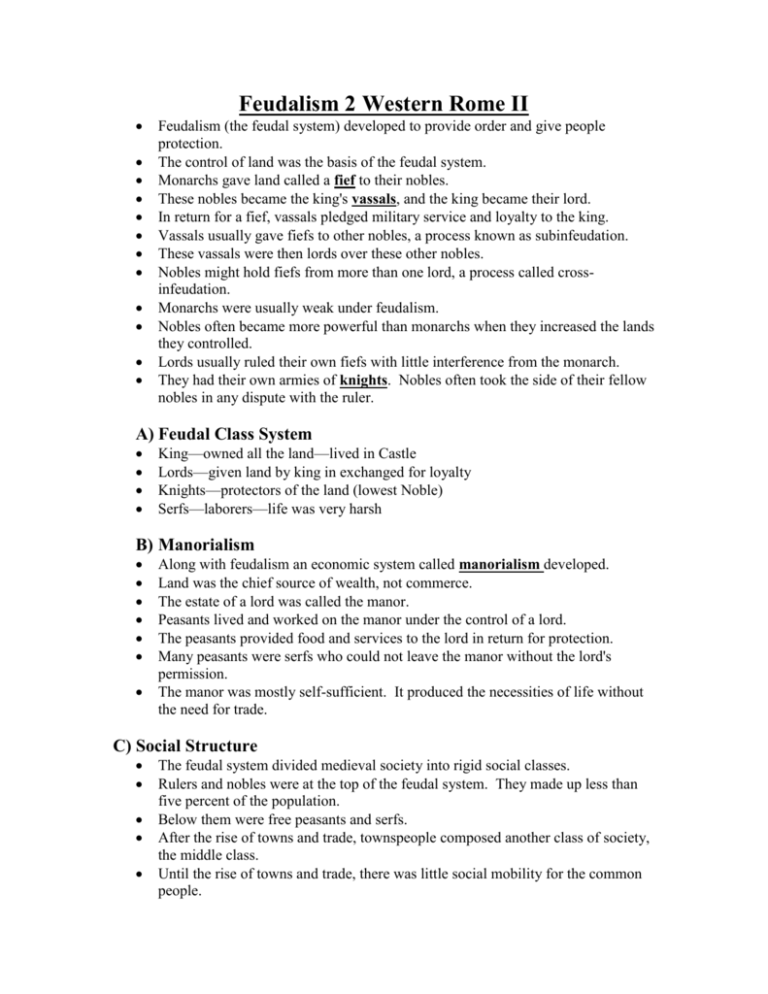
Feudalism 2 Western Rome II Feudalism (the feudal system) developed to provide order and give people protection. The control of land was the basis of the feudal system. Monarchs gave land called a fief to their nobles. These nobles became the king's vassals, and the king became their lord. In return for a fief, vassals pledged military service and loyalty to the king. Vassals usually gave fiefs to other nobles, a process known as subinfeudation. These vassals were then lords over these other nobles. Nobles might hold fiefs from more than one lord, a process called crossinfeudation. Monarchs were usually weak under feudalism. Nobles often became more powerful than monarchs when they increased the lands they controlled. Lords usually ruled their own fiefs with little interference from the monarch. They had their own armies of knights. Nobles often took the side of their fellow nobles in any dispute with the ruler. A) Feudal Class System King—owned all the land—lived in Castle Lords—given land by king in exchanged for loyalty Knights—protectors of the land (lowest Noble) Serfs—laborers—life was very harsh B) Manorialism Along with feudalism an economic system called manorialism developed. Land was the chief source of wealth, not commerce. The estate of a lord was called the manor. Peasants lived and worked on the manor under the control of a lord. The peasants provided food and services to the lord in return for protection. Many peasants were serfs who could not leave the manor without the lord's permission. The manor was mostly self-sufficient. It produced the necessities of life without the need for trade. C) Social Structure The feudal system divided medieval society into rigid social classes. Rulers and nobles were at the top of the feudal system. They made up less than five percent of the population. Below them were free peasants and serfs. After the rise of towns and trade, townspeople composed another class of society, the middle class. Until the rise of towns and trade, there was little social mobility for the common people. D) The Medieval Catholic Church The Catholic Church was an important institution during the Middle Ages. It provided stability during a time of frequent feudal wars. Most of the people of Western Europe were Christians and the Church gave them a sense of unity. The Church was the only path to salvation for millions of Christians. It administered the sacraments, controlled worship, and punished heretics who questioned the Church's teachings. The Church maintained its own court and made laws for both the clergy and nonclergy. It kept records of births, deaths, and marriages. Popes often claimed supremacy over monarchs and challenged the authority of rulers. The Church was the largest single landowner in medieval Europe It also collected the tithe which is a 10 percent tax on a person's income. It outlawed usury -- charging interest for loans. It supported the idea of charging a just price for goods.
